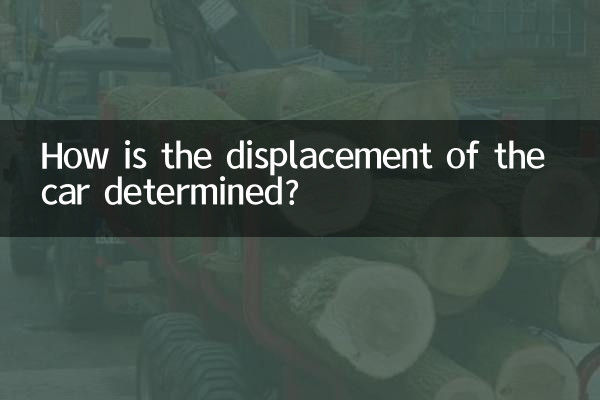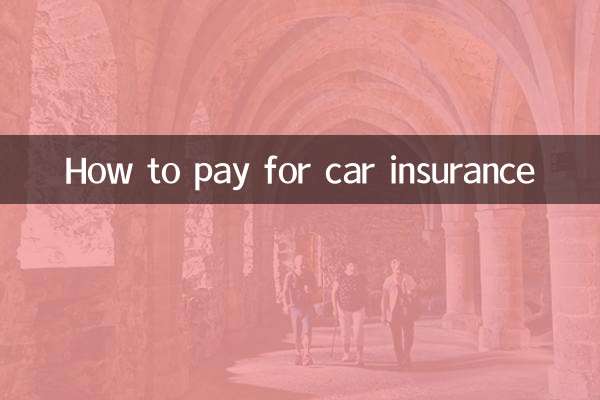How to find the best balance point in car displacement selection?
With the continuous development of the automobile market, consumers are faced with more and more choices when buying cars, of which displacement is a key factor. Displacement not only affects the vehicle's power performance, but is also closely related to fuel consumption, environmental standards and vehicle costs. This article will combine the hot topics and hot content on the entire network in the past 10 days to provide you with a detailed analysis of how to find the best balance point in displacement selection.
1. Basic concepts and classification of displacement

Displacement refers to the sum of the working volumes of all cylinders in the engine, usually measured in liters (L). According to displacement size, vehicles can be divided into the following categories:
| Displacement range | Vehicle type | Typical features |
|---|---|---|
| Below 1.0L | mini car | Economical and fuel-efficient, suitable for urban transportation |
| 1.0L-1.6L | Small car/compact car | Balance power and fuel consumption, the first choice for home use |
| 1.6L-2.5L | Mid-size car/SUV | Plenty of power, suitable for long-distance driving |
| 2.5L or more | Luxury car/performance car | High performance, high fuel consumption |
2. The relationship between displacement and fuel consumption
The impact of displacement on fuel consumption is one of the issues that consumers are most concerned about. The following is a comparison of the displacement and fuel consumption of recent popular models:
| car model | Displacement | Comprehensive fuel consumption (L/100km) |
|---|---|---|
| Toyota Corolla | 1.8L | 5.8 |
| Honda Civic | 1.5T | 6.2 |
| Volkswagen Tiguan L | 2.0T | 7.5 |
| BMW 3 Series | 2.0T | 7.8 |
It can be seen from the data that the larger the displacement, the higher the fuel consumption is usually. However, with the popularization of turbocharging technology, small-displacement turbocharged engines can also provide good power performance while maintaining low fuel consumption.
3. Balance between displacement and power
Power performance is another important consideration of displacement. The following is a comparison of power performance in different displacement ranges:
| Displacement range | Maximum power (kW) | Maximum torque (Nm) | 0-100km/h acceleration (s) |
|---|---|---|---|
| 1.0L-1.6L | 70-120 | 140-220 | 10-14 |
| 1.6L-2.0L | 120-180 | 220-350 | 7-10 |
| 2.0L-3.0L | 180-250 | 350-450 | 5-7 |
| 3.0L or more | 250+ | 450+ | Below 5 |
For daily household use, models with a displacement of 1.6L-2.0L can usually provide sufficient power while maintaining reasonable fuel consumption. If you pursue driving pleasure, you can consider a displacement of 2.0L or more.
4. The relationship between emissions and environmental protection policies
In recent years, environmental protection policies have become increasingly strict on emission limits. The following are the emission restriction policies of some cities:
| city | Displacement limit | Implementation time |
|---|---|---|
| Beijing | National VIB standard | July 2023 |
| Shanghai | National VIB standard | July 2023 |
| Guangzhou | National VIB standard | July 2023 |
| Shenzhen | National VIB standard | July 2023 |
These policies have prompted car companies to develop more efficient small-displacement engines, and consumers need to pay attention to whether they comply with local environmental standards when purchasing cars.
5. How to choose a suitable displacement?
Based on the above analysis, the following factors should be considered when selecting displacement:
1.Car use scene: Small-displacement vehicles are available for urban travel, and medium-displacement vehicles are recommended for long-distance driving.
2.budget: The larger the displacement, the higher the cost of purchasing and using the car.
3.Environmental requirements: Ensure compliance with local emission standards.
4.personal preference: Focus on economy or driving experience.
In short, there is no absolute right or wrong in the choice of displacement. The key is to find the balance between power, fuel consumption, cost and environmental protection that suits you best.

check the details

check the details